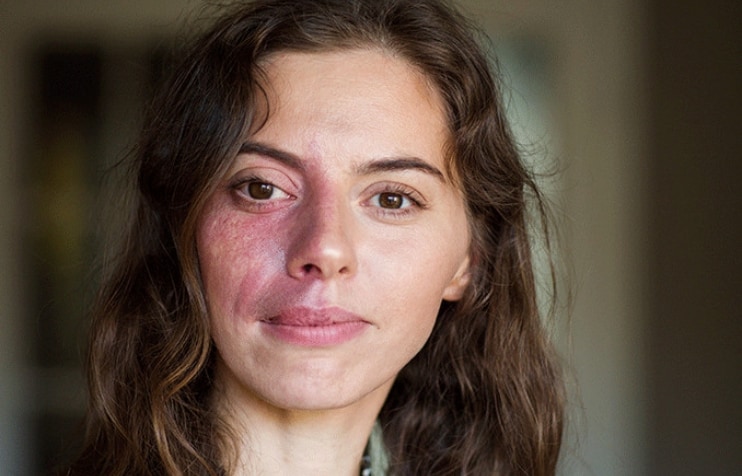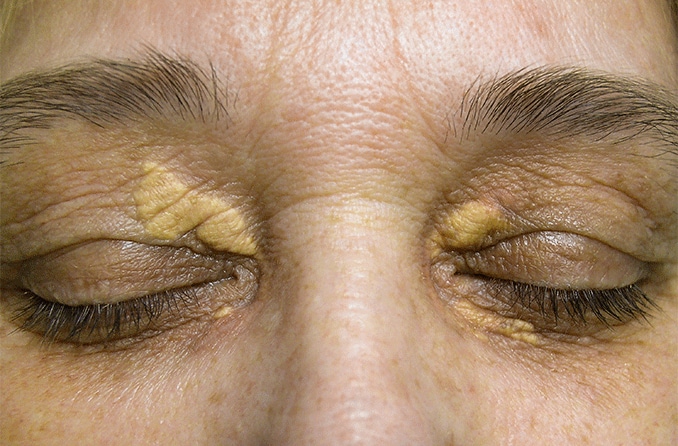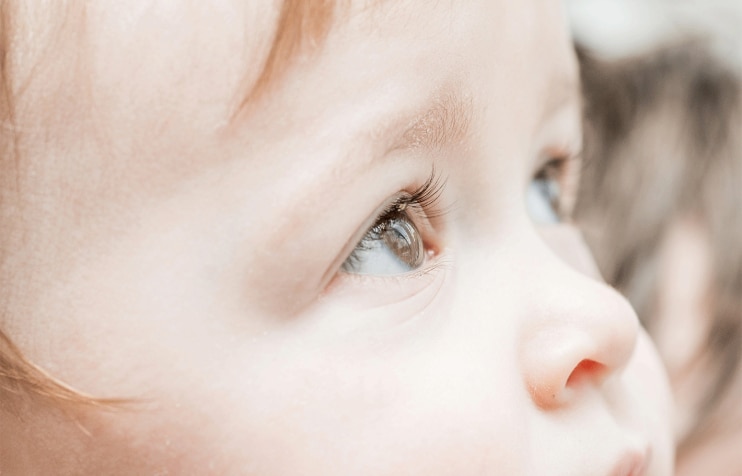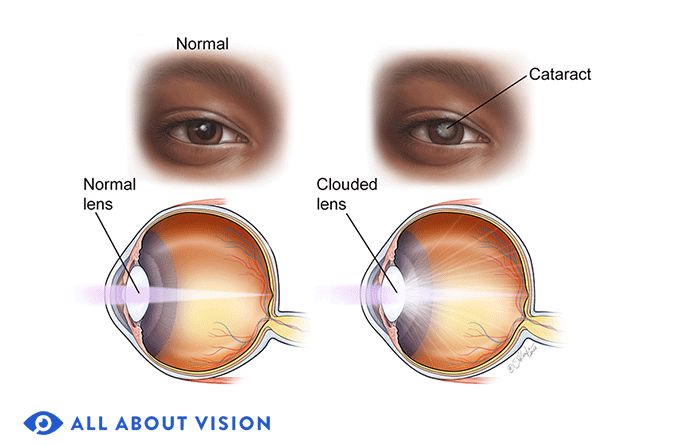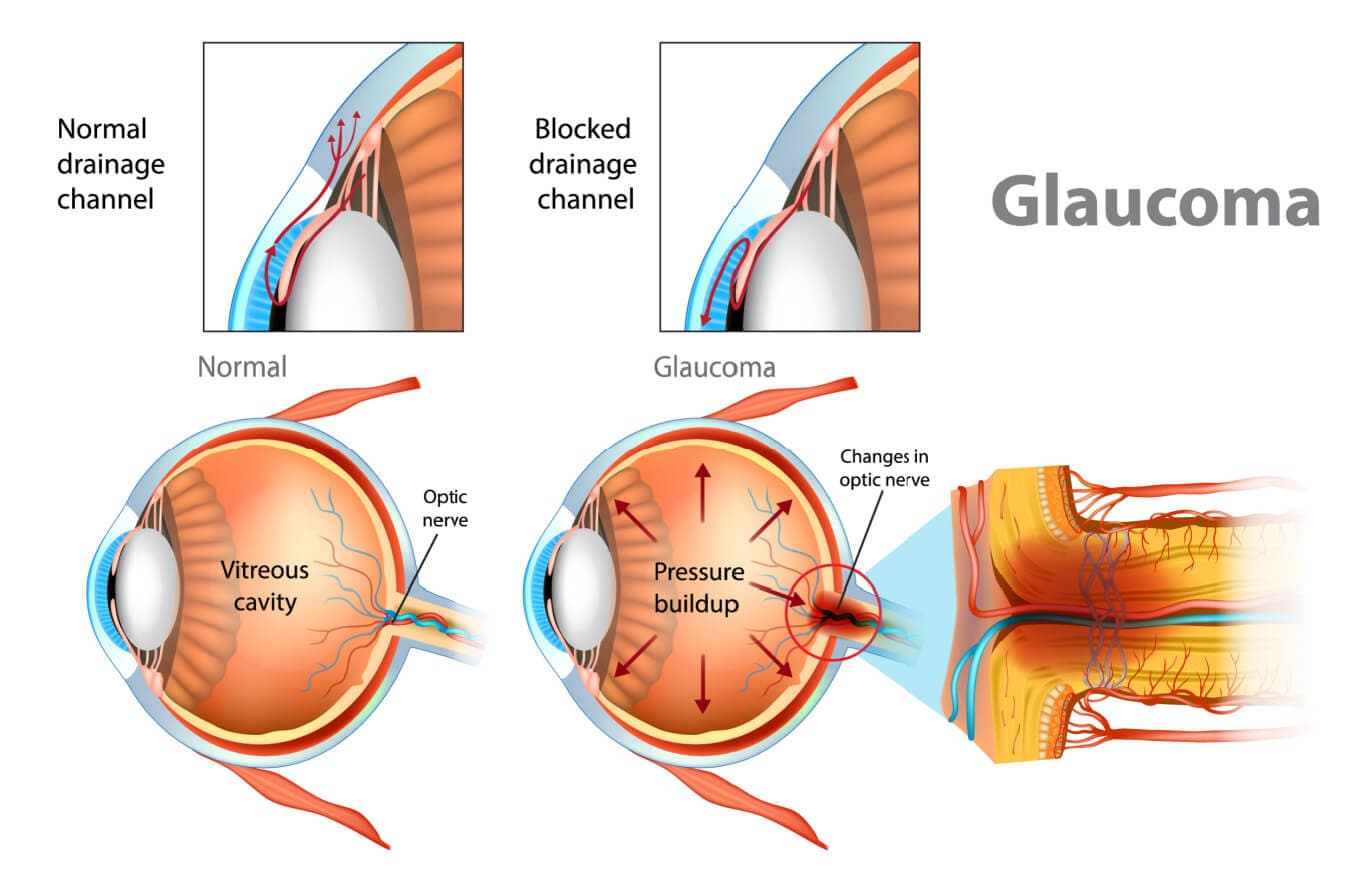What is Sturge-Weber syndrome?
Sturge-Weber syndrome (SWS) is a rare condition present from birth. It causes abnormal blood vessels to develop in the brain, skin and eyes. This can lead to a port-wine (PW) birthmark on the face; eye problems such as glaucoma; and brain issues that cause seizures, migraines and muscle weakness.
SWS can cause a range of symptoms that vary from person to person. Many people with SWS do well with proper medical care and support. The condition occurs in about one in 20,000 to 50,000 babies born each year. SWS impacts boys and girls of all ethnic backgrounds equally.
SWS is not inherited. It happens randomly due to a gene mutation during pregnancy when the baby develops. If you have one child with SWS, the chance of having another child with the condition does not increase.
What causes Sturge-Weber syndrome?
Sturge-Weber syndrome is not passed from parents to children. It results from a random mutation in the baby’s genes during pregnancy. The mutation is on the GNAQ gene, which makes a protein that controls blood vessel growth and function. The mutation causes the protein to always be active. As a result, clusters of abnormal blood vessels called angiomas develop in the skin, eyes and brain.
Port-wine stains, also known as port-wine birthmarks, are caused by clusters of blood vessels located just beneath the skin. The purplish marks often appear on the forehead and upper eyelid on one side of the face.
Leptomeningeal angiomas are angiomas (abnormal clusters of blood vessels) that form within the tissues covering the brain and spinal cord. If they develop, they can lead to:
- Epilepsy
- Muscle weakness
- Cognitive impairment
- Other neurological issues
Angiomas can also develop in the eyes. They can cause increased eye pressure, blurry vision and other serious eye problems.
Signs and symptoms of Sturge-Weber syndrome
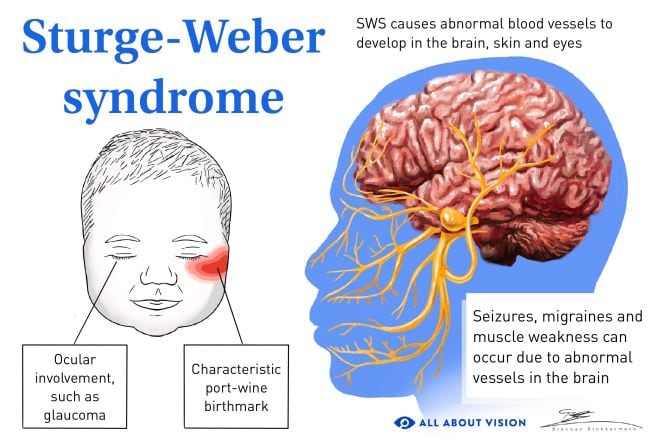
People with Sturge-Weber syndrome can have a wide range of symptoms affecting the skin, eyes and brain. The severity and type vary for each individual. Symptoms are usually present at birth, but some may not develop until a child is older.
SWS is generally classified into three main types based on which body systems are affected. These types guide doctors in diagnosis and treatment:
- Type I (Classic type) – A port-wine birthmark appears on the face. There are also leptomeningeal angiomas (abnormal blood vessels) in the brain. Eye issues such as glaucoma are possible. This is the most common type.
- Type II – A port-wine birthmark appears on the face, but the brain is not usually affected. Eye issues such as glaucoma are possible.
- Type III – There is no port-wine birthmark on the face. Abnormal blood vessels in the brain are present. Eye problems are rare.
Eye symptoms
Vision can be severely affected by the complications caused by SWS, particularly if not treated promptly.
Glaucoma
Glaucoma is a condition that damages the optic nerve, the nerve that connects the eye to the brain. The condition is usually associated with high eye pressure. If not treated, it can cause vision loss.
Glaucoma may occur when abnormal clusters of blood vessels block fluid drainage in the eye or raise pressure in the eye’s veins.
Glaucoma affects 30% to 70% of people with SWS. The likelihood of developing glaucoma increases if a port-wine birthmark is on the eyelid. About 60% of those with glaucoma will have it at birth, and 40% will develop it later.
When it occurs in babies, it is called congenital glaucoma. It can cause the eyeball to become enlarged, a condition known as buphthalmos. Parents may notice that one eye appears larger than the other.
Other eye symptoms of glaucoma include:
- Dilated blood vessels on the white part of the eye (the sclera)
- Hazy cornea (the clear front layer of the eye)
- Excessive tearing
- Eye pain
Eye symptoms usually occur on the same side of the face as the port-wine birthmark. Babies born with PW birthmarks should see an ophthalmologist every few months in their first year to check eye pressure and eye health. If glaucoma is not detected, they should continue having an eye exam every year.
Choroidal angiomas
A choroidal hemangioma is a type of angioma that can occur when blood vessel clusters develop within the choroid. The choroid is the tissue at the back of the eye behind the light-sensing retina. In people with SWS, these blood vessel clusters are diffuse. This means they usually cover a broad area instead of being limited to a small spot.
Diffuse choroidal hemangiomas occur in about 20% of people with Sturge-Weber syndrome, usually on the same side as the port-wine birthmark. This causes the choroid to become thicker than it should be. The hemangiomas can affect how things appear or lead to blurry vision and other visual difficulties.
If the retina is affected, choroidal hemangioma can lead to vision-threatening conditions. Ongoing eye checkups and imaging scans are important for finding and monitoring these blood vessel growths in the choroid.
Vision symptoms
Problems with vision can occur because of angiomas and other underlying eye issues caused by SWS. These include:
- Blurry vision
- Refractive errors requiring glasses or contact lenses, such as nearsightedness and farsightedness
- Crossed eyes
- Visual field loss
Skin and brain symptoms
A port-wine birthmark on the face is often the first sign of Sturge-Weber syndrome. However, a child can have this type of birthmark and not have SWS. In fact, most babies with this birthmark do not have Sturge-Weber syndrome.
About 8% of children with facial port-wine birthmarks may have neurological problems. When the birthmark covers half or more of the face, the risk of having SWS increases to between 25% and 33%.
Skin
Port-wine birthmarks develop due to excessive clusters of tiny blood vessels (capillaries) under the skin. This is why the birthmark appears light pink, red or purple. It often appears on one side of the face, usually covering the eyelid, forehead and/or temple. It can also sometimes affect both sides of the face or other parts of the body. Without treatment, these birthmarks can become darker and thicken to become blood blisters.
Brain
Abnormal blood vessel clusters called leptomeningeal angiomas can develop on the surface of the brain. These can lead to poor blood flow and cause blood pooling and decreased oxygen levels.
Cortical atrophy, when areas of the outer layer of the brain deteriorate, can result. Calcification in the brain may also occur. This is because the gene mutation that causes SWS can also interfere with calcium signaling within cells.
These underlying causes can affect brain function and lead to:
- Epilepsy
- Muscle weakness on one side
- Learning delays
- Cognitive impairment
- Headaches and migraines
- Stroke-like episodes
Some children with Sturge-Weber syndrome have developmental delays and cognitive issues. Severe or hard-to-control seizures can make these issues worse. This is especially true if the seizures begin early. Between 75% and 90% of children experience seizures. These often start before the child’s first birthday.
How is Sturge-Weber syndrome diagnosed?
If a port-wine birthmark is found at birth, a complete exam is needed to diagnose SWS. The diagnosis requires at least two of the following three symptoms:
- A port-wine birthmark
- Clusters of abnormal blood vessels in the brain
- Clusters of abnormal blood vessels in the eyes
If SWS is suspected, doctors may order imaging tests like an MRI or CT scan. These tests help find angiomas in the brain. An EEG may be required to detect seizures. A complete eye exam is also necessary. This will include an eye pressure check and screening for angiomas.
Early diagnosis helps families and doctors create treatment plans before serious complications develop. It also allows for early intervention services. These services can help improve long-term outcomes for children with SWS.
Treatment for Sturge-Weber syndrome
Treatment is focused on addressing the specific symptoms experienced by each individual. A team of specialists must work together, including:
- Pediatricians
- Neurologists
- Eye doctors
- Dermatologists
Together, the care team can develop a treatment plan tailored to the child’s needs. Treatment may be needed for (and may include):
- Seizures – Medicines like antiseizure drugs, sometimes surgery
- Stroke-like episodes – Aspirin to decrease the risk of having the episodes
- Glaucoma – Eye drops or surgery
- Port-wine birthmark – Laser therapy to lighten the birthmark
- Development support – Physical therapy, special education classes
It's important to educate the whole family about SWS. Each person should learn to recognize triggers and warning signs of complications. This way, they can help manage the child's condition and find support services when needed.
Living with Sturge-Weber syndrome
Living with Sturge-Weber syndrome can require regular medical care. It also requires paying attention to potential complications. Regular follow-up appointments help catch problems early before they become serious.
Managing seizures can include taking medications consistently. Schools can provide seizure action plans and modify educational and physical activities.
Eye care requires lifelong vigilance since glaucoma can develop or worsen at any time. Annual eye exams are recommended, but some patients may need more frequent monitoring. Parents should learn to watch for signs of increased eye pressure, such as eye pain, vision changes and light sensitivity.
Early intervention services for young children can be particularly beneficial. Physical therapy and occupational therapy help address weakness and coordination problems.
What’s the outlook for Sturge-Weber syndrome?
SWS is generally not life-threatening but it can affect daily life. Symptoms can range from mild to severe depending on the severity and location of the patient’s angiomas.
Factors that influence the prognosis include:
- Age when seizures begin (earlier onset often means more severe symptoms)
- Extent of brain angiomas
- Success in controlling seizures with medication
- Early detection and treatment of glaucoma and other eye issues
- Access to comprehensive medical care and support services
Many children with SWS have improved quality of life with the help of supportive care teams and live normal lifespans.
Clinical trials are testing early treatment with medications like sirolimus. This drug works at the cellular level and may help slow the progression of some symptoms. These studies offer hope for better treatments in the future.
Support groups connect families dealing with similar challenges. Organizations like the Sturge-Weber Foundation can also be helpful. They can offer resources, educational materials and connections to medical experts.
